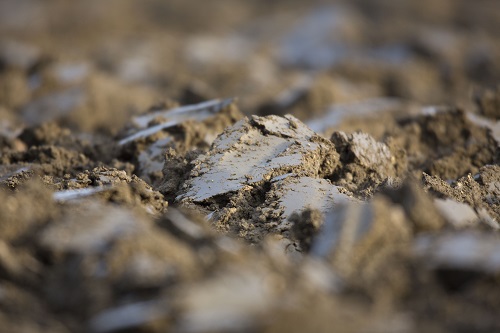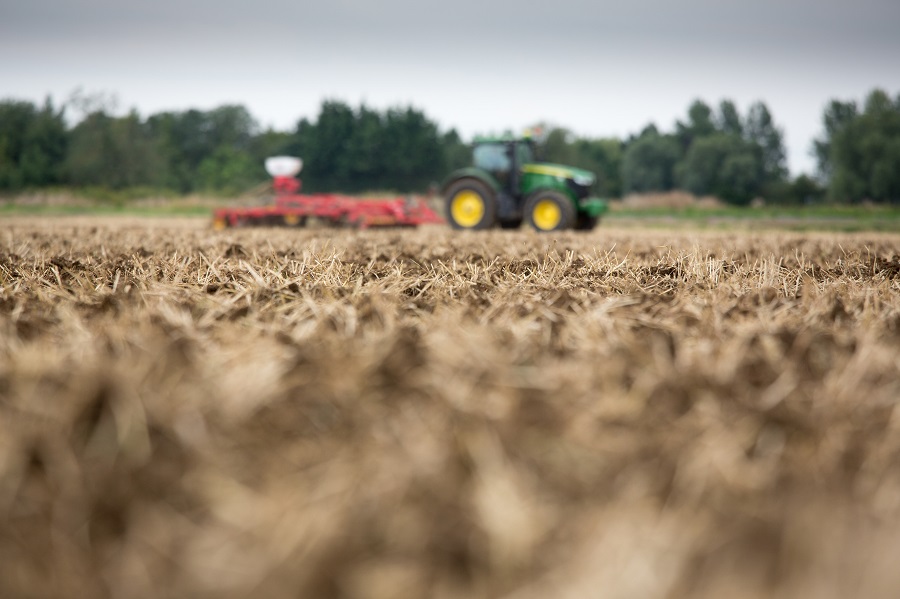As agriculture moves closer to 2040, CPM takes a look at both the biggest allies and greatest challenges of the machinery sector when it comes to achieving Net Zero.
I think the idea of having large, heavy, 200hp tractors going forward is limited.
By Charlotte Cunningham
As we move into the spring of 2021, there’s just 19 years to go before the industry will see whether its efforts to meet the NFU’s Net Zero ambitions by 2040 will have been effective.
And though this may seem a long time away for some, in climate change terms, it’s a relatively short window to achieve an awful lot.
While machinery has a significant role to play, there’s a much broader picture to consider when it comes to achieving Net Zero, says Harry Henderson, knowledge exchange technical manager at AHDB. “We’ve been talking about this a lot over the past few weeks, and it’s becoming very apparent that while the industry knows it’s very easy to lose carbon through cultivations, simply stopping them isn’t going to help “save”, or capture, carbon as such.

The state of soils will directly impact the choice of workable machinery on farm.
“In my view, building up organic matter within the soil – by use of tools such as cover cropping – is the most important first step for reducing the environmental impact of arable farming, rather than just going out and buying a no-till drill.
“Building up organic matter could mean going from 1-3% to 4-6%, but the crucial thing to remember is that it should be long-term business goal – not a quick fix.”
As well as the environmental benefits of healthier soils, there’s also opportunity to reduce artificial fertiliser applications – further adding to that overall goal of Net Zero, adds Harry.
“Having healthier, better performing soils will also help growers understand soil nutrient availability more. This means they’ll be able to take a much more accurate view on if, and when, artificial sources are needed.
“There’s a certain amount of fuel to be saved when reducing applications too. Revising fertiliser usage could contribute to quite a sizeable carbon saving.”
Once growers are confident their soils are in good health, then it’s time to start thinking about where machinery can fit in, adds Harry. “One of the main reasons it’s so important to have your soils in order before thinking about kit is because the state of soils will dictate what machinery you can realistically work on farm.
“Growers ought to be asking themselves things like is it prone to compaction? Can it restructure itself well? Or is the drainage up to scratch?”
If your goal is to reduce emissions as much as possible, a different approach to direct drilling may be the most suitable route, advises Harry. “It’s important to stress that no-till will not work for everyone. But there are other options such as minimal disturbance drills or perhaps considering the effectiveness of a toolbar that goes in first?
“Root crop growers have the challenge of late harvests and leaving soils bare all winter without a crop of some sort established. A strip-till or tine-based direct drill could help here.”
But whichever approach growers opt for, he stresses that it has to be a gradual, planned movement – rather than something that can be changed overnight. “No-till can be the long-term goal, but there usually has to be a series of stepping stones first.”
For the industry to be able to realistically meet its goals, some may argue that a sense of responsibility falls on manufacturers to ensure that effective, lower emission options are available. However, Harry believes it’s not quite as simple as that. “Interestingly, there are more ploughs on the market than ever before at the moment, so if a reduction in ploughing is the right route, I’m not sure manufacturers feel the need for any responsibility.
“However, what I think we will see is that once ELMs become clear and gives the industry a more definitive indication of where the government wants us to be heading, then I’m sure manufacturers are going to bend over backwards to provide solutions.”
The role of the manufacturer was a topic mooted recently at the roundtable meeting to announce CPM’s 2020 Climate Change Champion.
Amongst those attending was Fendt’s Martin Hamer. Fendt is currently work on its Xaver sowing robots and believes such technology will play a huge role in reducing compaction, energy consumption and emissions.
Though the Xaver swarm of robots are still in the development stage, Martin offered some advice for growers in the meantime, specifically in terms of minimising compaction in a bid to create healthier soils. “The problem for many is how can you possibly minimise the potential for soil compaction when you’ve got large areas to cover and very tricky weather windows to deal with.
“What I would suggest is that looking at tyre technology is something that farmers should do, specifically the inflation pressures of those tyres. To minimise damage or maximise the footprint to spread the load as far as you possibly can.”
BKT also stressed the importance of tyre specification and how this can contribute to both efficiency and longevity. “Our new RideMax Type 697 has been modified to match requirements of stability, lower rate interaction on the road and is made of a different compound, and this is a way to ensure the tyre is more efficient,” said the firms Yuri Dantilio. “We’ve also developed a new potential procedure to measure the 3D footprint of a tyre to get essential information to study soil compaction.”
Last month, the firm also announced it’s expanding its V-Flexa range – designed to make field work more sustainable.
First unveiled at 2019’s Agritechnica show, the V-Flexa tyre is specifically intended for use on agricultural trailers and features flotation and very high flexion technology which enable operators to transport 40% more weight at the same air pressure as a standard tyre.
“When it comes to what can be done to reduce agriculture’s impact on the environment, agricultural vehicles can make a difference. For example, there’s an increasing number of smart, efficient tractors equipped with cutting-edge technology, such as GPS satellite systems, which help map land and understand its geographic layout in order to organise crops, and therefore making agricultural work more sustainable.
“Moreover, preventing damage to the soil is becoming essential in order to respect the necessary sustainable parameters – hence the choice of the right tyre to fit out tractors and trailers is proving essential.”
: Fuelling the beast
When it comes to machinery, it’s not just about the efficiency of the kit itself, but also the fuel that powers it.
This is something that manufacturers are trialling at present, with prototypes such as methane-powered tractors now looking like a potential future solution.
Ahead of the online Low Carbon Agriculture event this month, speakers recently gathered at an online Digital Insights webinar, hosted by the show, to discuss the impact of agricultural vehicles and the solutions in place to help the sector reduce its impact.
Speaking at the webinar, Mike Woollacott, managing director of Greenwatt Technology offered some insight into the viability of the three main alternative fuel sources: biogas, electric and hydrogen. “We’re seeing a lot more non-diesel solutions coming through now. I think the idea of having large, heavy, 200hp tractors going forward is limited.”
“Looking at electricity, it’s good to see the government are now supporting on-shore wind resources again as renewable sources are going to be important for electric-powered machinery. Many manufacturers, like Fendt, John Deere and New Holland, are looking into the potential of electric vehicles, but the big challenge with battery-powered tractors is the sheer weight of the battery.
“This really impacts on what the tractor can do and is certainly a limiting factor. At an NFU workshop last year, the conclusion was made that in under 50hp vehicles, we’d see a lot of development in electric-powered vehicles – but over that, we’ve got to start looking for alternatives.
“That said, to drive this concept forward, we need market leaders, and it’s reassuring to see JCB’s recent announcement of an all-electric telehandler. It’s a good step forward.”
Given the current restrictions with batteries, biomethane power is gaining a lot of attention, added Mike. “This is basically biogas that’s upgraded, but the fact that we have the potential to upgrade it for fuel cell vehicles is one that I’m surprised we’ve not seen much more development of so far.
“We know the technology is available, and looking at things like anaerobic digesters on farm, or even just methane capture from slurry lagoons, the potential for producing biomethane to run our tractors and farm machinery is a viable solution.
“Valtra is an example of a firm that’s just beyond prototype stage, showing that the potential is there.”
Hydrogen power is also increasing in popularity, added Mike, with the government hailing it as one of the answers to the climate change challenges the country faces.
“It’s starting to be looked at for heating, but also for transport, and the idea of using it for fuel cell vehicles – whether that be cars or tractors – looks promising for a farm producing renewable energy that can use that electricity through an electrolyser to split water and boost the hydrogen.”
The efficiency of electrolysers has now improved significantly too, meaning if you’re producing electricity cheaply – rather than grid power – that becomes even more of a justification for this kind of closed-loop opportunity for hydrogen power on farm, he adds.
“We’ve seen prototypes from New Holland and have started to see hydrogen buses in places like London, but at the moment, the general feeling is that until the hydrogen infrastructure is better and we can reliably source it – most importantly, greenly – we’re not going to see a huge number of hydrogen-powered vehicles.”
Mike pointed out that the government is investing in hydrogen, with a new UK £240m net-zero hydrogen fund to be established. “Within the next 10 years, I can see it being one of the fuels of the future, and particularly for farming could it have a significant impact.”




